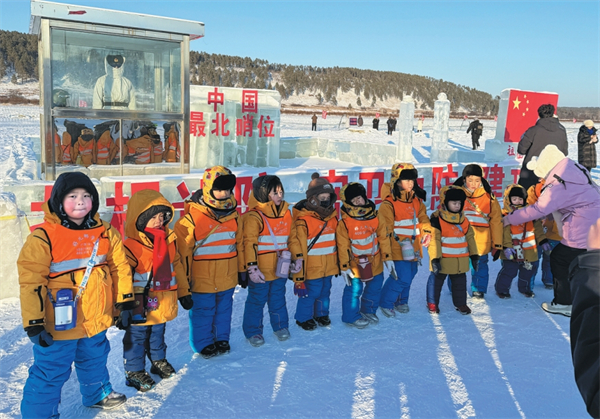Home>Industries
Harbin’s pillar industries
Updated : 2020-03-06
By ( e.my399.com )
It is aiming to be an important national hub for the deep processing of green agricultural products, a leading national advanced equipment manufacturing base with core competitiveness, a national biomedical cluster development demonstration zone – as well to become an international cultural and tourist city.
According to the Harbin industry development plan, by 2021, the total added value of the city's industries above a designated scale is projected to top 90 billion yuan ($12.97 billion).
Of this, the value-added of strategic emerging industries will reach 30 percent or more of the total; the value-added of service industries will stabilize at about 65 percent of the city’s total GDP; and the total scale of leading industries and advantageous industries will exceed 700 billion yuan.
Pillar industry development plan
Green agricultural products deep processing industry
To accelerate the construction of an important national base for the deep processing of green agricultural products, Harbin is striving to achieve an output value of 100 billion yuan in its green agricultural products deep processing industry in 2021, with an average annual growth rate of 14 percent going forward.
It will focus on the development of modern grain and oil processing, high-quality beverages and high-end livestock products processing, while actively cultivating and developing characteristic forestry products processing.
Advanced equipment manufacturing industry
Harbin will continue to push forward technological innovation, industry reform and upgrading to adjust its industry structure. It will move to transform traditional industries with advanced applicable technologies, environmentally friendly development modes and highly efficient services.
It aims to promote the integrated development of military and civilian equipment manufacturing and build its up as a "Made in China 2025" demonstration city.
Harbin is striving for the output value of its high-end equipment manufacturing industry to reach 100 billion yuan in2021, with an average annual growth rate of 17 percent moving ahead.
It will focus on the development of aerospace, clean energy and environmental protection equipment, new energy vehicles and robots -- while actively developing its ice and snow equipment manufacturing industry.
Modern Biomedicine Industry
Harbin is taking major breakthroughs in modern biotechnology as the driver to implement the “Biotechnology Leads Upgrading Demonstration Project”.
It is aiming to build into a national biomedical industry cluster development demonstration area, by relying on its solid foundations in the pharmaceutical industry.
It is targeting a total revenue of 100 billion yuan in its modern biomedicine industry in 2021, with an average annual growth rate of more than 20 percent.
The industry will focus on the development of biotechnology medicine, chemical medicine, modern Chinese medicine, biomedical engineering and others.
Culture and tourism industry
Harbin is adhering to the concept of “lucid snow and lush ice are invaluable assets” and is implementing an integrated development demonstration project for its culture and tourism industries.
It will strive to make full use in leveraging its culture and tourism resources to build itself into an international culture and tourist city, with "China’s Davos and the World’s Yabuli" as its business card.
It will focus on the development of ice and snow tourism, ecological summer tourism, fashion, creative culture and others, while vigorously increasing tourism marketing efforts.
Revenue in the tourism industry hit 137.62 billion yuan in 2018, an increase of 16.9 percent, year-on-year. Of the total, domestic tourism revenue was 136.88 billion yuan, an increase of 17.2 percent; and the foreign exchange generated by international tourists was $111.17 million, a decrease of 17.2 percent compared with that of the previous year.

Harbin ramps up childcare services
A new comprehensive service center for childcare in Harbin is expected to be finished by the end of the year.
-
Talent policies drive enterprise development in Harbin
Harbin's "30 New Talent Policies" represents an iterative upgrade to the talent policy system, helping attract and retain talent to bolster economic and social development.
-
Official website of 2025 Asian Winter Games goes live
Harbin, the host city of the 9th Asian Winter Games, has announced that the official website for the 2025 event has recently gone live.
-
Harbin launches measures to facilitate more foreign trade
In the first three quarters of 2023, the total import and export value of Heilongjiang province's goods trade hit 218.22 billion yuan.





